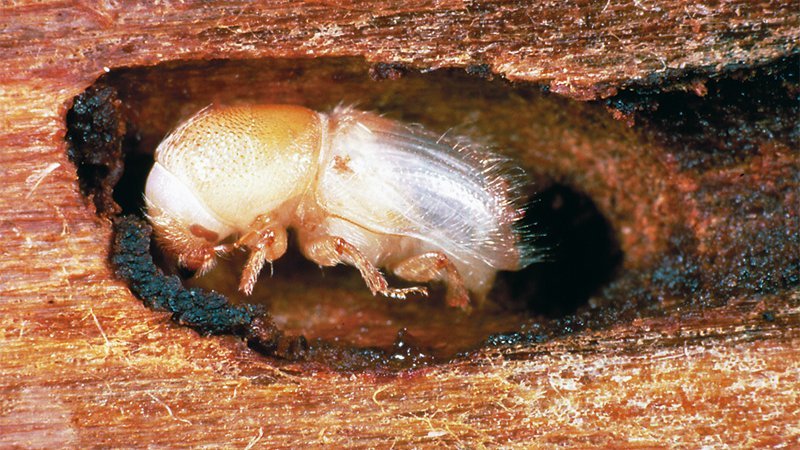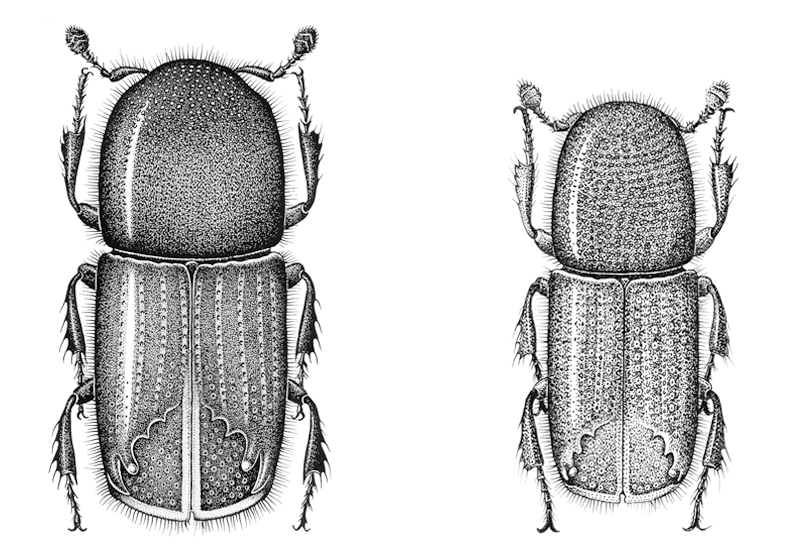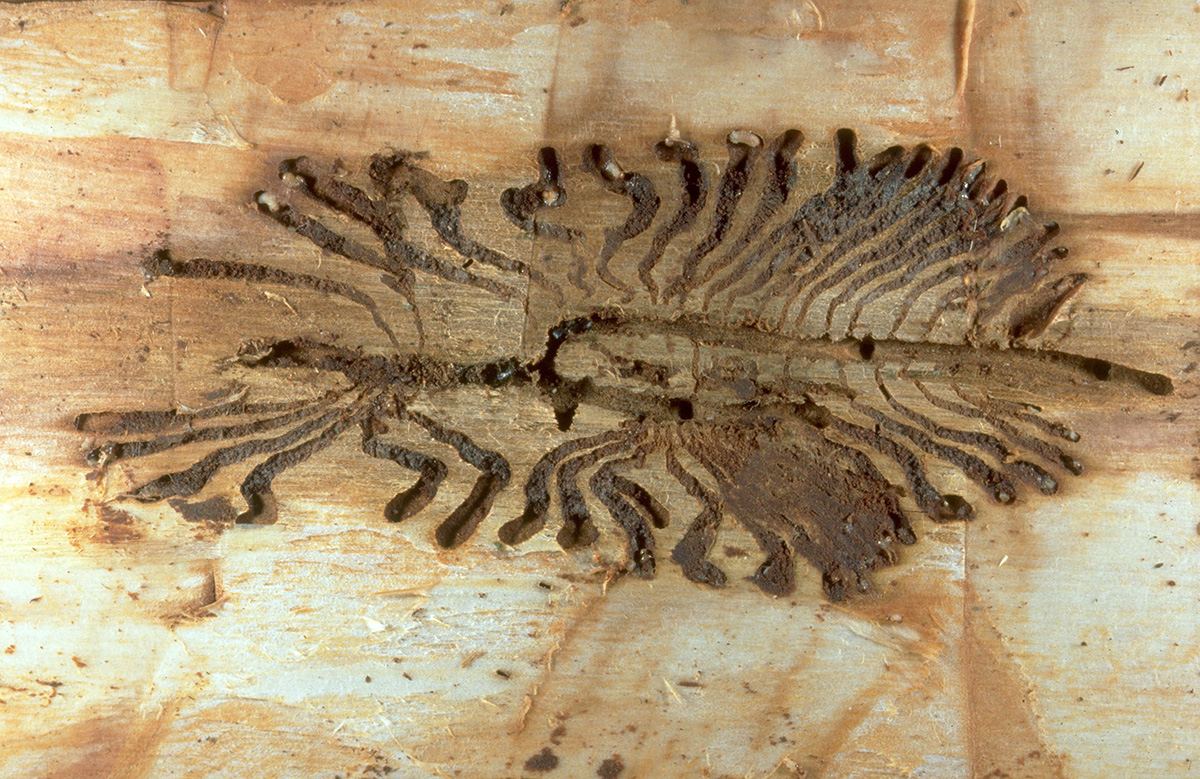The large spruce bark beetle is living within the entire area of Norway spruce, up to an elevation of 2000 m.a.s. The small spruce bark beetle prefers mountainous areas above 800 m up to the forest line. The highest occurrence was recorded at 2250 m.a.s.
The large spruce bark beetle is mainly populating spruce and occasionally other conifers, in particular, pine trees. The small spruce bark beetle is mostly living on spruce, Swiss stone pine and mountain pine.

Fig. 1. Large spruce bark beetle after its pupation. Photo: Beat Fecker (WSL)
What do the two bark beetle species look like?

Fig. 2. Left: The large spruce bark beetle (Ips typographus). Right: The small spruce bark beetle (Ips amitinus)
What is the life cycle of the bark beetles?
Approximately above 16 degrees air temperature, the beetles start to swarm after over-wintering. The male drills an entrance for the most part on thicker spruce stems and establishes a nuptial chamber to attract two or three females. The adults and the larvae feed underneath the bark where typical galleries are drilled. After three to four weeks and three larvae stages, the pupation phase begins. The bright brown, hairy young beetle starts its maturation feeding. The original gallery system is destroyed and the bark is falling off the stem. The complete beetle development will last approximately seven to twelve weeks. Normally, one or two generations occur per year, depending on the temperature.
What are the natural enemies?
Bark beetles have numerous natural enemies, which are summarized in a special fact sheet "The Natural Enemies of Bark Beetles (in German)". The most important enemies are predacious flies and beetles, as well as parasitic wasps. In addition, woodpecker and other bird species, as well as fungal infections, decimate the beetle population.
How can a beetle attack be recognized?
The first sign of an attack is the escape of brown boring dust. Afterwards, woodpeckers start to look for beetles and larvae. The typical gallery system can be detected underneath the bark.

Abb. 3. Typical gallery system of the bark beetle. Foto: Beat Wermelinger
During a later stage, the spruce crowns start turning brown from the lower part. Due to the maturation feeding of the new adults, the bark becomes loose and the beetles emerge. During mass reproductions of the large spruce bark beetle, entire areas of attacked spruce stands may die off.
What measures should be taken against the bark beetle?
Preventive measures include uneven stands, the withdrawal of potential breeding material, and the monitoring of the flying activities with pheromone traps. After the colonization, newly attacked stems should be detected, cut and debarked, or should be taken outside of the forest.
What measures should be taken against the bark beetle?
Preventive measures include uneven stands, the withdrawal of potential breeding material, and the monitoring of the flying activities with pheromone traps. After the colonization, newly attacked stems should be detected, cut and debarked, or should be taken outside of the forest.
